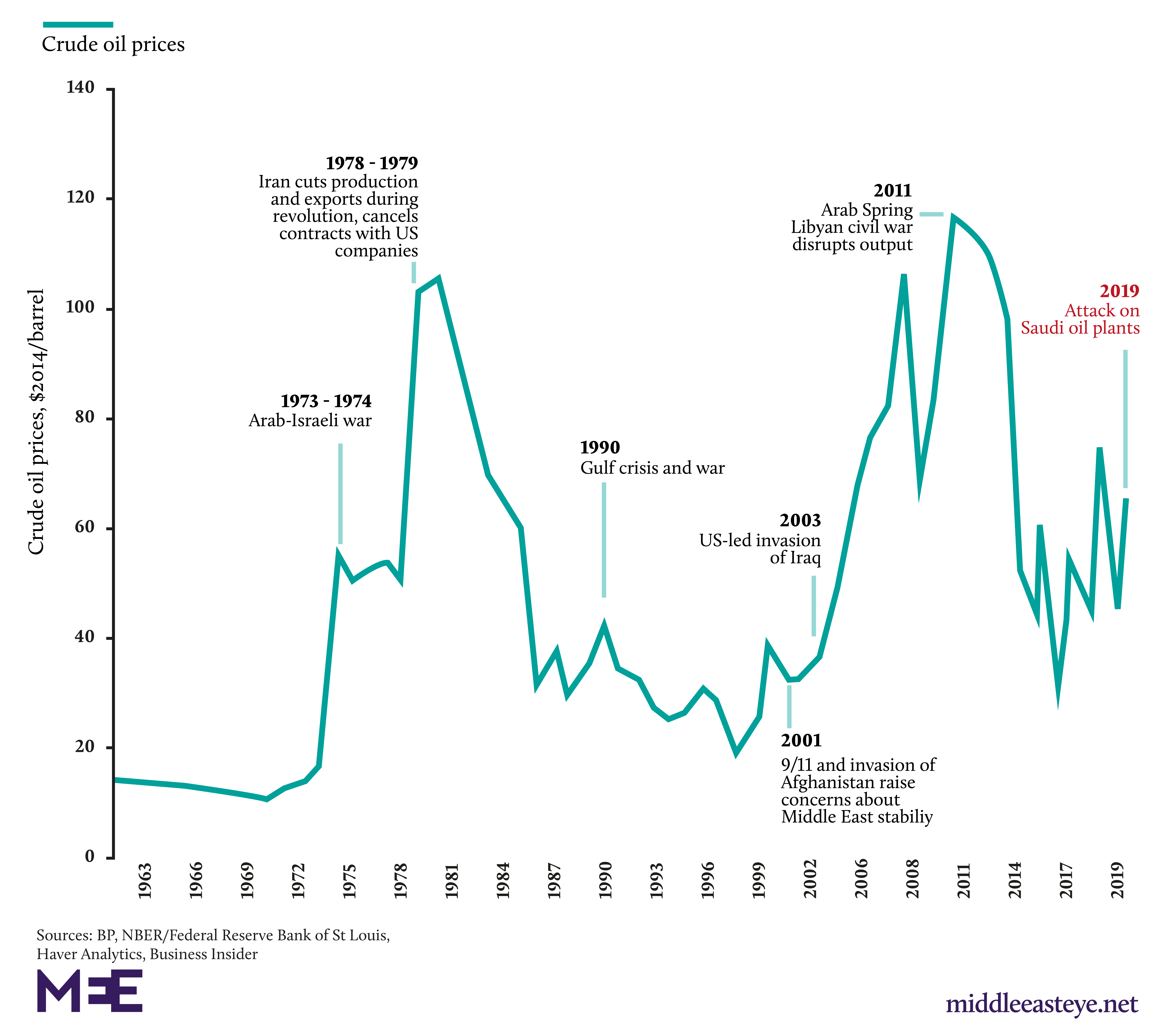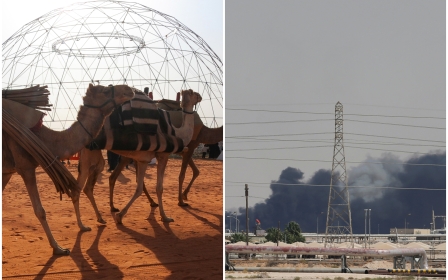Saudi oil attacks: Seven times events in the Middle East sent prices soaring

With Monday seeing one of the sharpest rises in crude oil prices in history following the attacks on Saudi energy plants, Middle East Eye has taken a look back at some of the more tumultuous events in the region's history and how they have provoked similar spikes:
1. The Arab–Israeli War, Arab oil embargo, 1973
The Arab Israeli War, which started with an attack on Israel by Syria and Egypt on 5 October 1973, saw oil prices quadruple. In solidarity with the Arab nations, on 19 October the 12 members of the Organisation of Petroleum Exporting Countries (OPEC) proclaimed an oil embargo sending prices soaring.
Barrels lost per day: 4.3m
2. Iranian Revolution 1979
New MEE newsletter: Jerusalem Dispatch
Sign up to get the latest insights and analysis on Israel-Palestine, alongside Turkey Unpacked and other MEE newsletters
The combination of the Iranian revolution and the Iran-Iraq war caused crude oil prices to more than double in the period from 1978 to 1981. The war also damaged much of the oil production infrastructure of both countries, further depressing output.
Barrels lost per day: 5.6m
3. Gulf crisis and war, 1990
Oil prices rose sharply after Iraq invaded Kuwait on 2 August 1990 as Saddam Hussein attempted to secure the emirate's energy resources leading to the First Gulf War in January 1991. After being driven out of the country by an international coalition, Hussein's forces set fire to many Kuwaiti oil wells, burning through millions of barrels worth of oil.
Barrels lost per day: 4.3m
4. 11 September, 2001
Oil prices shot upward following the attacks on the United States as fears emerged that oil imports from the Middle East would be curtailed. Within a week prices returned approximately to their pre-attack levels as no new attacks occurred and deliveries of oil continued.
5. US-led invasion of Iraq, 2003
Oil prices steadily rose for several months in anticipation of the invasion but actually dropped sharply following the ultimatum given by then US President George Bush to Saddam Hussein in March to leave the country or face ousting. Prices continued to drop following the invasion but within a year had started rising again as oil production began to fall again amid growing chaos in Iraq.
Barrels lost per day: 2.3m
6. Arab Spring, Libya civil war, 2011
The outbreak of conflict in Libya following uprisings against Muammar Gaddafi led to a drop in production pushing oil prices higher. Fighting over control of the oil plants in Libya would mark much of the post-uprising civil war for years.
7. Attack on Saudi oil plants, 2019
Following the strikes on Saudi Aramco's oil plants in the east of the kingdom, the oil price rose by as much as 19.5 percent, the biggest intra-day jump since the First Gulf War.
Barrels lost per day: 5.7m
Source: International Atomic Energy Agency, BBC
Middle East Eye delivers independent and unrivalled coverage and analysis of the Middle East, North Africa and beyond. To learn more about republishing this content and the associated fees, please fill out this form. More about MEE can be found here.





